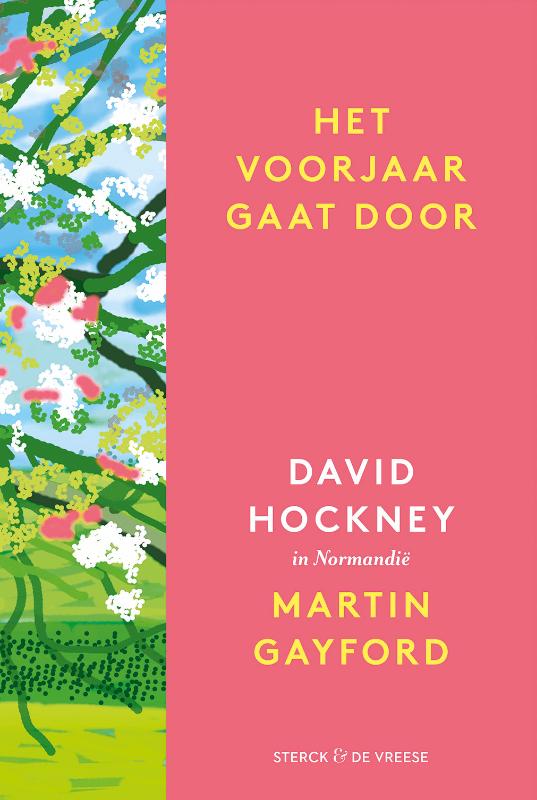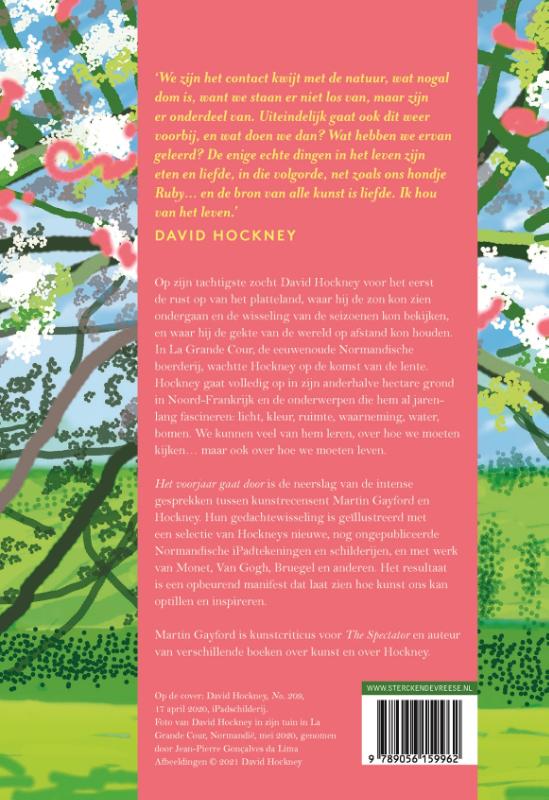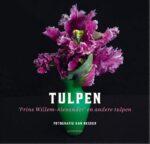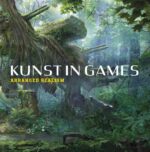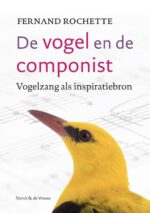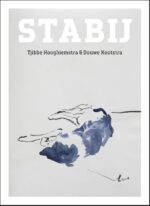Het voorjaar gaat door
€ 29,90
Op zijn tachtigste zocht David Hockney voor het eerst de rust op van het platteland, waar hij de zon kon zien ondergaan en de wisseling van de seizoenen kon bekijken, en waar hij de gekte van de wereld op afstand kon houden. In La Grande Cour, de eeuwenoude Normandische boerderij, wachtte Hockney op de komst van de lente. Hockney gaat volledig op in zijn anderhalve hectare grond in Noord-Frankrijk en de onderwerpen die hem al jaren¬lang fascineren: licht, kleur, ruimte, waarneming, water, bomen. We kunnen veel van hem leren, over hoe we moeten kijken… maar ook over hoe we moeten leven.
Het voorjaar gaat door is de neerslag van de intense gesprekken tussen kunstrecensent Martin Gayford en Hockney. Hun gedachtewisseling is geïllustreerd met een selectie van Hockneys nieuwe, nog ongepubliceerde Normandische iPadtekeningen en schilderijen, en met werk van Monet, Van Gogh, Bruegel en anderen. Het resultaat is een opbeurend manifest dat laat zien hoe kunst ons kan optillen en inspireren.
Martin Gayford is kunstcriticus voor The Spectator en auteur van verschillende boeken over kunst en over Hockney.
Gerelateerde boeken
-
-
Kunst in Games
€ 19,95In de bijna onbeperkte mogelijkheden om ‘uit te beelden’, historische werkelijkheden digitaal te verwezenlijken en fantasie om te zetten in werelden die zich hyperrealistisch voordoen, loopt de game voorop. Beter dan welke andere discipline ook is zij in staat mensen te betrekken en werelden te laten ervaren waarin werkelijkheid en fantasie, waarheid en fictie in elkaar vervloeien.
Games komen tot stand dankzij de bijdragen van honderden specialisten uit verschillende vakgebieden. Tezamen hebben zij de laatste decennia de game in technologisch maar ook beelden opzicht naar een uitzonderlijk hoog niveau weten te tillen.
Het boek ‘Kunst in Games’ blikt terug op vijftig jaar innovatie, maar schenkt vooral aandacht aan laatste ontwikkelingen en aan het werk van een toonaangevende kunstenaars binnen de game industrie.
-
De vogel en de componist
€ 24,90Beethoven en zijn vriend Schindler stopten tijdens een wandeling bij een kabbelend beekje en Beethoven zei: ‘Hoor je de zang van de merel en de koekoek? … Hier heb ik twintig jaar geleden mijn Pastorale ontworpen. De vogels speelden en zongen in de takken. Ze hebben samen met mij gecomponeerd.’ Componisten uit alle eeuwen en streken lieten zich door
vogelzang inspireren. Sommigen waren echte vogelaars of natuurliefhebbers, anderen hoorden dan weer een puttertje of een zanglijster in een volière zingen. Ze observeerden, luisterden en lieten daarna het gefluit van de vogels in de muziek weerklinken. De vogel en de componist introduceert de lezer eerst in de vogelzang: Waarom zingt een vogel? Waar kan je de vogel het best waarnemen? 40 verschillende vogels klinken in 160 composities van meer dan 60 componisten. Van Händel tot Vivaldi en Prokovjef, van Ravel tot André Rieu en Alban Berg. Elke zang van de vogel en elk muziekstuk waarin de vogel figureert, kan worden afgespeeld via een QR-code. -
Stabij
€ 17,90Tjibbe Hooghiemstra (beeldend kunstenaar) en Douwe Kootstra (schrijver en verteller) zijn gek op stabijs. Tjibbe heeft al jaren zulke honden. Die inspireerden hem tot een uitgebreide serie tekeningen.
Los van de verbeeldingen van Tjibbe schreef Douwe verhalen die één overeenkomst hebben: een stabij speelt de hoofdrol. De mix van beeld en tekst maakt Stabij tot een bijzonder boek. Geen hondenboek in de klassieke zin maar een ode aan de mens in de hond.
